The global forklift market is transforming, propelled by the surge in demand for efficient material handling solutions across industries and the rise of autonomous technologies. By 2030, the autonomous forklift segment alone is projected to reach USD 7.11 billion, growing at a robust CAGR of 9.55%, reflecting the shift towards automation and advanced safety. This article explores the market landscape, key players, trends, and critical purchasing considerations, offering professional buyers actionable insights to navigate this dynamic industry effectively.
Table of Contents:
Understanding the Global Forklift Market
Key Factors to Consider When Selecting a Forklift
Evaluating Forklift Brands and Models
Cost Considerations and Budgeting
Trends Influencing Forklift Selection
Making the Final Decision on Forklift Purchase
Understanding the Global Forklift Market
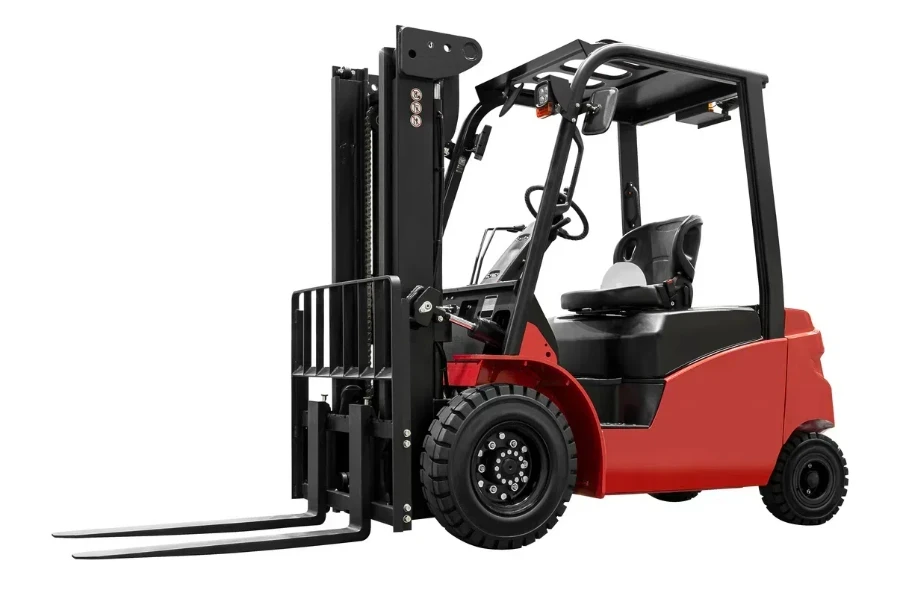
Introduction
As of 2024, the global forklift market is experiencing significant growth, driven by the increasing demand for efficient material handling solutions in various industries. According to recent data, the market size of autonomous forklifts alone is projected to reach USD 7.11 billion by 2030, growing at a CAGR of 9.55% from 2024. This trend highlights the industry’s shift towards automation and advanced technologies to enhance operational efficiency and safety.
Current Market Landscape
The global forklift market is currently valued at USD 4.06 billion in 2024, with expectations to grow significantly in the coming years. The market is segmented into various types, including counterbalance forklifts, order pickers, and pallet trucks, each catering to specific operational needs. The rise of e-commerce and the need for efficient warehousing solutions are major drivers of this growth. Additionally, the integration of advanced technologies such as AI and machine learning in forklifts is enhancing their capabilities, making them more efficient and reliable.
The market is also witnessing a shift towards electric forklifts, driven by the need for sustainable and eco-friendly solutions. Electric forklifts are gaining popularity due to their lower operational costs and reduced environmental impact. In 2024, the market for electric forklifts is expected to grow at a CAGR of 5.81%, reaching USD 4.93 billion by 2030. This growth is supported by government regulations promoting the use of electric vehicles and the increasing adoption of green logistics practices.
Key Players in the Forklift Industry
The forklift industry is dominated by several key players who are continuously innovating to maintain their market position. Companies such as Toyota Industries Corporation, KION Group AG, and Jungheinrich AG are leading the market with their advanced forklift solutions. These companies are investing heavily in research and development to introduce new technologies and improve the efficiency of their products.
Toyota Industries Corporation, for instance, has introduced a new line of forklifts powered by both diesel and lithium-ion batteries, showcasing their commitment to meeting diverse customer needs. Similarly, KION Group AG is focusing on automation and digitalization to enhance their product offerings. The company’s recent partnership with Kollmorgen to develop autonomous forklifts is a testament to their innovative approach.
In addition to these established players, several new entrants are making their mark in the industry. Companies like Oceaneering Mobile Robotics and Fox Robotics are introducing cutting-edge autonomous forklift solutions, further intensifying the competition. These new players are leveraging advanced technologies such as AI and robotics to offer highly efficient and reliable forklifts, catering to the evolving needs of the market.
Market Demand and Supply Dynamics
The demand for forklifts is primarily driven by the growth of the e-commerce sector and the need for efficient warehousing and distribution solutions. The increasing adoption of Industry 4.0 practices is also contributing to the demand for advanced forklifts. In 2024, the market for autonomous forklifts is expected to grow significantly, driven by the need for efficient and cost-effective material handling solutions.
On the supply side, manufacturers are focusing on enhancing their production capabilities to meet the growing demand. The availability of raw materials and the cost of production are key factors influencing the supply dynamics. The market is also witnessing a trend towards the localization of production to reduce dependency on global supply chains and mitigate risks associated with geopolitical tensions and natural calamities.
The supply chain for forklifts is also evolving, with manufacturers adopting advanced technologies such as IoT and blockchain to enhance traceability and efficiency. These technologies are helping manufacturers streamline their operations and reduce lead times, ensuring timely delivery of products to customers. The integration of these technologies is also enabling manufacturers to offer customized solutions, catering to the specific needs of their customers.
Key Factors to Consider When Selecting a Forklift
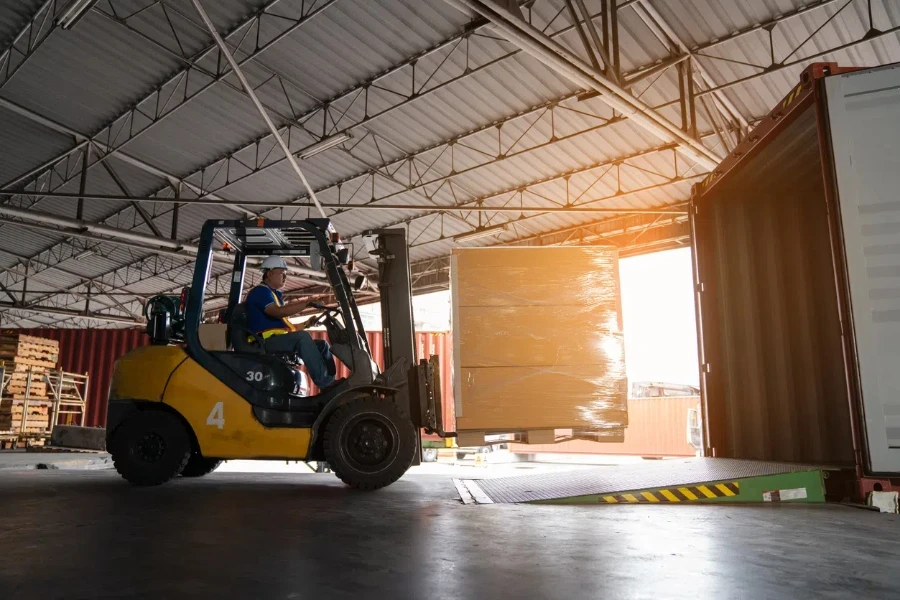
Load Capacity and Lift Height
When selecting a forklift, one of the most critical factors to consider is the load capacity and lift height. The load capacity refers to the maximum weight a forklift can safely lift and transport, while the lift height indicates how high the forklift can raise the load. These specifications are crucial for ensuring the forklift can handle the specific requirements of your operations.
For instance, in a warehouse setting, forklifts with higher lift heights are essential for stacking goods on high shelves. On the other hand, in manufacturing facilities, forklifts with higher load capacities are necessary to transport heavy materials. According to recent data, the demand for forklifts with load capacities of 5-10 tons is increasing, driven by the need for efficient material handling in heavy industries.
Additionally, the type of load being handled also influences the choice of forklift. For example, forklifts with specialized attachments such as clamps or rotators are required for handling non-standard loads. It is essential to assess the specific needs of your operations and choose a forklift with the appropriate load capacity and lift height to ensure safety and efficiency.
Type of Forklift: Electric vs. Internal Combustion
Another important factor to consider when selecting a forklift is the type of power source. Forklifts can be powered by either electric batteries or internal combustion engines. Each type has its advantages and disadvantages, and the choice depends on the specific requirements of your operations.
Electric forklifts are gaining popularity due to their lower operational costs and reduced environmental impact. They are ideal for indoor use as they produce zero emissions and operate quietly. According to market data, the demand for electric forklifts is expected to grow at a CAGR of 5.81%, reaching USD 4.93 billion by 2030. However, electric forklifts have limitations in terms of battery life and charging time, which may not be suitable for operations requiring continuous use.
On the other hand, internal combustion forklifts are more powerful and can handle heavier loads and longer operating hours. They are suitable for outdoor use and can operate in harsh environments. However, they produce emissions and require regular maintenance, which can increase operational costs. It is essential to evaluate the specific needs of your operations and choose the type of forklift that best meets your requirements.
Terrain and Operating Environment
The terrain and operating environment are also crucial factors to consider when selecting a forklift. Forklifts are designed to operate in different environments, and choosing the right type ensures optimal performance and safety. For instance, forklifts used in outdoor environments need to be robust and capable of handling rough terrains.
Pneumatic tire forklifts are ideal for outdoor use as they provide better traction and stability on uneven surfaces. According to market data, the demand for pneumatic tires is increasing, driven by the need for efficient material handling in outdoor environments. On the other hand, forklifts used in indoor environments require smooth tires to protect the flooring and reduce noise levels.
Additionally, the operating environment also influences the choice of forklift. For example, forklifts used in cold storage facilities need to be equipped with features to withstand low temperatures. Similarly, forklifts used in hazardous environments need to be equipped with safety features to ensure the safety of the operators. It is essential to assess the specific requirements of your operating environment and choose a forklift that is designed to handle those conditions.
Ergonomics and Operator Comfort
Ergonomics and operator comfort are critical factors to consider when selecting a forklift. Forklift operators spend long hours operating the equipment, and ensuring their comfort and safety is essential for maintaining productivity and reducing the risk of injuries. Ergonomically designed forklifts are equipped with features that enhance operator comfort and reduce fatigue.
For instance, forklifts with adjustable seats, steering wheels, and controls allow operators to customize the equipment to their comfort. Additionally, forklifts with advanced suspension systems provide a smoother ride, reducing the impact of vibrations and shocks. According to market data, the demand for forklifts with advanced ergonomic features is increasing, driven by the need to enhance operator comfort and productivity.
Furthermore, operator training is also crucial for ensuring the safe and efficient operation of forklifts. Providing operators with proper training on the use of ergonomic features and safety protocols can significantly reduce the risk of accidents and injuries. It is essential to choose a forklift that is designed with operator comfort in mind and invest in proper training to ensure the safety and productivity of your operations.
Safety Features and Compliance
Safety features and compliance with industry standards are paramount when selecting a forklift. Forklifts are powerful machines, and ensuring their safe operation is essential to prevent accidents and injuries. Modern forklifts are equipped with advanced safety features that enhance operator safety and reduce the risk of accidents.
For instance, forklifts with advanced braking systems, stability control, and collision avoidance systems provide enhanced safety during operation. According to market data, the demand for forklifts with advanced safety features is increasing, driven by the need to comply with stringent safety regulations and enhance workplace safety. Additionally, forklifts with integrated telematics systems provide real-time monitoring and diagnostics, allowing operators to identify and address potential safety issues promptly.
Compliance with industry standards and regulations is also crucial for ensuring the safe operation of forklifts. Forklifts need to meet specific safety and emissions standards to be used in certain environments. It is essential to choose a forklift that complies with the relevant standards and regulations to ensure the safety and efficiency of your operations. Investing in forklifts with advanced safety features and ensuring compliance with industry standards can significantly enhance the safety and productivity of your operations.
Evaluating Forklift Brands and Models
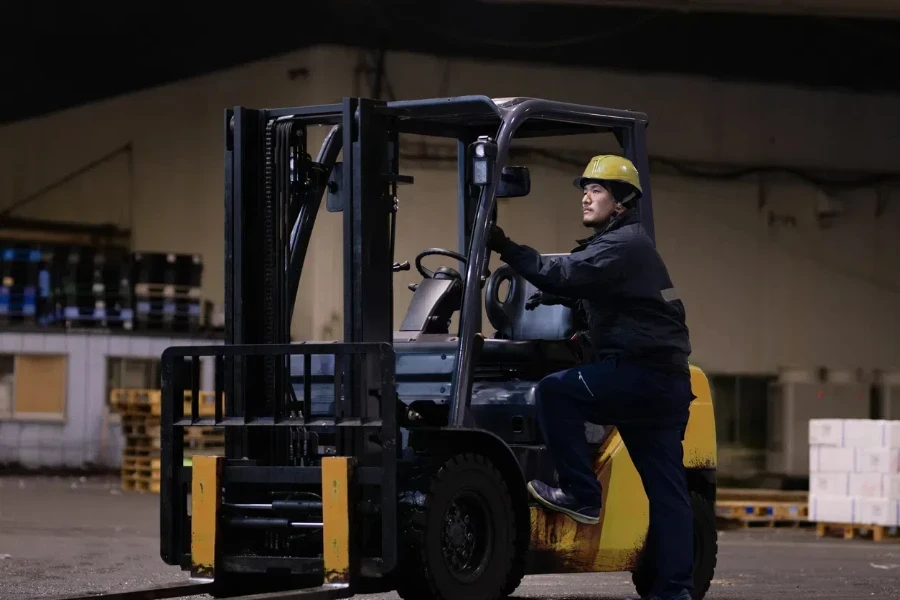
Leading Forklift Brands
In the forklift industry, several brands have established themselves as leaders due to their reliability, innovation, and extensive product lines. Toyota Material Handling is renowned for its high-quality electric and internal combustion forklifts, offering models with advanced safety features and ergonomic designs. Another prominent brand is Hyster-Yale, known for its robust and durable forklifts that cater to heavy-duty applications in various industries. Additionally, Crown Equipment Corporation stands out for its innovative approach to forklift design, particularly in the realm of electric forklifts, which are highly efficient and environmentally friendly.
Komatsu Forklift is another key player, offering a wide range of forklifts that are designed for both indoor and outdoor use, with a focus on fuel efficiency and operator comfort. Mitsubishi Logisnext, a merger of Mitsubishi, Nichiyu, and UniCarriers, provides a comprehensive portfolio of forklifts that are known for their reliability and performance in demanding environments. Lastly, Jungheinrich is a leading brand in Europe, specializing in electric forklifts and warehouse technology, with a strong emphasis on automation and energy efficiency.
These brands have consistently invested in research and development to enhance their product offerings. For instance, Toyota’s System of Active Stability (SAS) technology significantly reduces the risk of accidents by automatically stabilizing the forklift during operation. Similarly, Crown’s InfoLink system provides real-time data on forklift performance and operator behavior, helping businesses optimize their material handling operations. As the industry continues to evolve, these leading brands are expected to remain at the forefront by continuously innovating and adapting to market demands.
Comparing Forklift Models Based on Specifications
When comparing forklift models, several key specifications must be considered to ensure the right fit for specific applications. Lift capacity is a critical factor, with models ranging from 3,000 lbs to over 100,000 lbs, depending on the intended use. For example, the Toyota 8FGCU25 has a lift capacity of 5,000 lbs, making it suitable for general warehouse operations, while the Hyster H360HD2 can handle up to 36,000 lbs, ideal for heavy industrial applications.
Another important specification is the lift height, which determines how high the forklift can raise its load. Models like the Crown C-5 Series offer lift heights up to 312 inches, providing flexibility for high-rack storage systems. In contrast, the Komatsu FG25T-16, with a lift height of 189 inches, is more suited for standard warehouse environments. Additionally, the type of tires used—pneumatic or cushion—affects the forklift’s performance on different surfaces. Pneumatic tires, found on models like the Mitsubishi FD50N, are ideal for outdoor use on rough terrain, while cushion tires, as seen on the Jungheinrich EFG 220, are better for indoor use on smooth surfaces.
Fuel type is another crucial consideration, with options including electric, diesel, gasoline, and propane. Electric forklifts, such as the Jungheinrich EFG 535k, are favored for their low emissions and quiet operation, making them suitable for indoor use. Diesel and propane models, like the Hyster H50FT, offer more power and are better suited for outdoor or heavy-duty applications. By carefully evaluating these specifications, businesses can select the forklift model that best meets their operational needs and enhances productivity.
Customer Reviews and Testimonials
Customer reviews and testimonials provide valuable insights into the real-world performance and reliability of forklift models. Many users praise the Toyota 8FGCU25 for its exceptional durability and low maintenance costs, highlighting its advanced safety features and ergonomic design. Similarly, the Crown C-5 Series receives positive feedback for its robust construction and innovative InfoLink system, which helps operators monitor and optimize performance.
The Hyster H360HD2 is often commended for its powerful engine and high lift capacity, making it a favorite among users in heavy industrial settings. Customers appreciate its ability to handle large loads with ease and its reliable performance in demanding environments. On the other hand, the Komatsu FG25T-16 is noted for its fuel efficiency and operator comfort, with many users highlighting its smooth operation and ease of maintenance.
Electric models like the Jungheinrich EFG 535k receive high marks for their energy efficiency and low noise levels, making them ideal for indoor use. Users also appreciate the advanced features and automation capabilities that enhance productivity and reduce operational costs. Overall, customer reviews and testimonials are essential for understanding the strengths and weaknesses of different forklift models, helping businesses make informed purchasing decisions.
Cost Considerations and Budgeting
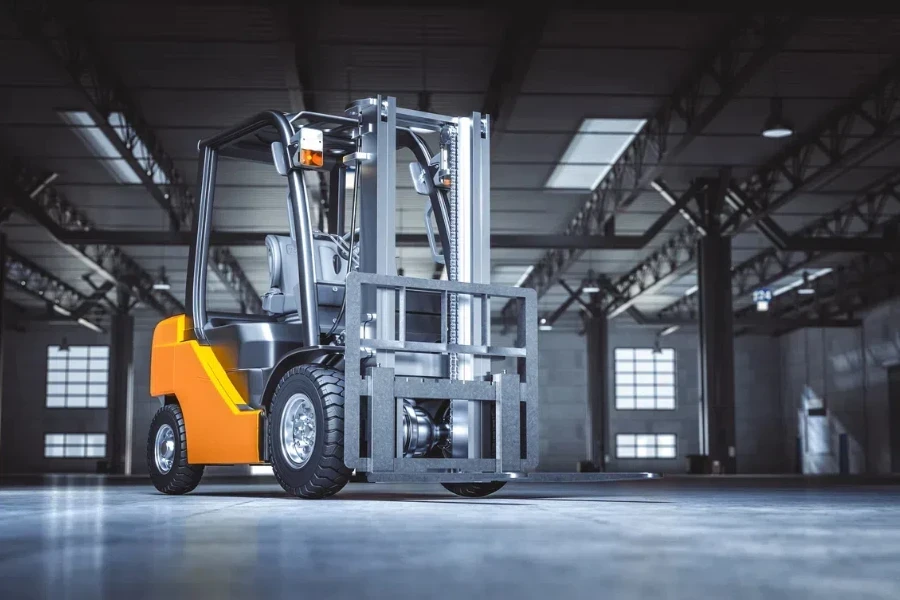
Initial Purchase Price vs. Total Cost of Ownership
When evaluating forklifts, it’s crucial to consider both the initial purchase price and the total cost of ownership (TCO). The initial purchase price of a forklift can range from $15,000 to over $100,000, depending on the model and specifications. For instance, a basic electric forklift like the Jungheinrich EFG 220 might cost around $25,000, while a heavy-duty diesel model like the Hyster H360HD2 could exceed $100,000. However, the initial cost is just one part of the equation.
The TCO includes ongoing expenses such as maintenance, fuel, and operator training. Electric forklifts, while often more expensive upfront, tend to have lower operating costs due to reduced fuel expenses and fewer moving parts, which translates to lower maintenance costs. For example, the Crown C-5 Series, despite its higher initial price, offers significant savings over time through its energy-efficient design and reduced maintenance needs. Conversely, internal combustion forklifts like the Komatsu FG25T-16 may have lower initial costs but higher fuel and maintenance expenses.
Depreciation is another factor affecting TCO. Forklifts typically depreciate at a rate of 15-20% per year, but well-maintained models from reputable brands like Toyota and Hyster can retain their value better. By considering both the initial purchase price and the TCO, businesses can make more informed decisions that align with their long-term financial goals and operational needs.
Maintenance and Repair Costs
Maintenance and repair costs are significant components of the total cost of ownership for forklifts. Regular maintenance is essential to ensure the longevity and reliability of the equipment. For electric forklifts like the Jungheinrich EFG 535k, maintenance costs are generally lower due to fewer moving parts and the absence of an internal combustion engine. Routine maintenance tasks include battery checks, tire inspections, and software updates, which can be managed with minimal downtime.
In contrast, internal combustion forklifts, such as the Hyster H50FT, require more frequent maintenance due to their complex engine systems. This includes oil changes, filter replacements, and engine tune-ups, which can add up over time. Additionally, the cost of fuel for diesel or propane forklifts can be substantial, especially in high-usage environments. For example, a diesel forklift might consume 1-2 gallons of fuel per hour, leading to significant fuel expenses over its operational life.
Unexpected repairs can also impact the overall cost. Forklifts operating in harsh environments or under heavy loads are more prone to wear and tear, necessitating more frequent repairs. Investing in a comprehensive maintenance plan and choosing models with robust warranties can help mitigate these costs. Brands like Toyota and Crown offer extended warranties and service packages that cover major components, providing peace of mind and reducing the financial burden of unexpected repairs.
Financing and Leasing Options
Financing and leasing options provide flexibility for businesses looking to acquire forklifts without a significant upfront investment. Leasing is an attractive option for companies that prefer to keep their equipment up-to-date with the latest technology. Lease agreements typically range from 3 to 5 years, with monthly payments that cover maintenance and repairs. This allows businesses to manage their cash flow more effectively and avoid the large capital expenditure associated with purchasing new equipment.
Financing options, such as loans or equipment financing agreements, enable businesses to spread the cost of the forklift over several years. Interest rates and terms vary depending on the lender and the creditworthiness of the borrower. For example, a 5-year loan with a 5% interest rate on a $50,000 forklift would result in monthly payments of approximately $943. Financing allows businesses to own the equipment outright at the end of the term, which can be beneficial for long-term operational stability.
Some manufacturers and dealers offer in-house financing programs with competitive rates and flexible terms. For instance, Toyota Material Handling provides financing solutions tailored to the needs of their customers, including deferred payment options and seasonal payment plans. By exploring various financing and leasing options, businesses can find the most suitable solution to acquire the necessary equipment while maintaining financial flexibility.
Trends Influencing Forklift Selection
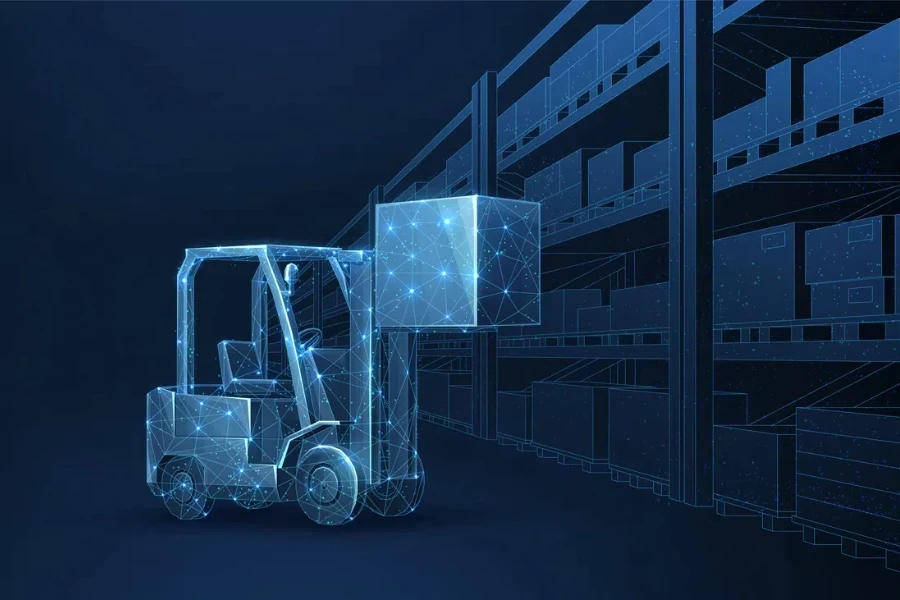
Technological Advancements in Forklifts
Technological advancements are significantly influencing forklift selection, with innovations aimed at improving efficiency, safety, and connectivity. One notable development is the integration of telematics systems, such as Crown’s InfoLink, which provides real-time data on forklift performance, operator behavior, and maintenance needs. This technology enables businesses to optimize their fleet management, reduce downtime, and enhance overall productivity.
Automation is another key trend, with automated guided vehicles (AGVs) and autonomous forklifts becoming increasingly popular. These forklifts use advanced sensors, cameras, and artificial intelligence to navigate warehouses and perform tasks without human intervention. For example, the Jungheinrich EKS 215a is an automated stacker that can handle repetitive tasks, freeing up human operators for more complex activities. This not only improves efficiency but also reduces labor costs and minimizes the risk of accidents.
Electric forklifts are also benefiting from advancements in battery technology. Lithium-ion batteries, such as those used in the Toyota 3-Wheel Electric Forklift, offer longer run times, faster charging, and a longer lifespan compared to traditional lead-acid batteries. These batteries are more environmentally friendly and require less maintenance, making them an attractive option for businesses looking to reduce their carbon footprint and operational costs. As technology continues to evolve, forklifts are becoming smarter, safer, and more efficient, driving significant changes in the material handling industry.
Sustainability and Eco-friendly Forklifts
Sustainability is a growing concern in the forklift industry, with businesses increasingly seeking eco-friendly solutions to reduce their environmental impact. Electric forklifts are at the forefront of this trend, offering zero emissions and lower noise levels compared to internal combustion models. Brands like Jungheinrich and Toyota are leading the way with their extensive range of electric forklifts, which are ideal for indoor use and contribute to a cleaner working environment.
In addition to electric forklifts, manufacturers are exploring alternative fuel options such as hydrogen fuel cells. Hydrogen-powered forklifts, like those developed by Hyster-Yale, offer the benefits of quick refueling and longer run times, making them suitable for high-demand applications. These forklifts produce only water vapor as a byproduct, significantly reducing greenhouse gas emissions. As the infrastructure for hydrogen refueling expands, these forklifts are expected to become more prevalent in the market.
Sustainable manufacturing practices are also gaining traction, with companies focusing on reducing waste and energy consumption during production. For example, Toyota Material Handling has implemented various initiatives to minimize its environmental footprint, including the use of renewable energy sources and recycling programs. By prioritizing sustainability, businesses can not only comply with regulatory requirements but also enhance their corporate social responsibility and appeal to environmentally conscious customers.
Automation and Smart Forklifts
Automation and smart technology are revolutionizing the forklift industry, offering significant improvements in efficiency, safety, and operational control. Automated guided vehicles (AGVs) and autonomous forklifts are becoming more common in warehouses and distribution centers. These machines use advanced navigation systems, such as LIDAR and GPS, to move materials without human intervention. For instance, the Jungheinrich EKS 215a can autonomously transport goods, reducing labor costs and increasing productivity.
Smart forklifts equipped with telematics and IoT (Internet of Things) capabilities provide real-time data on various parameters, including location, usage, and maintenance needs. Crown’s InfoLink system is a prime example, offering insights into operator performance, battery health, and fleet utilization. This data-driven approach enables businesses to optimize their operations, schedule preventive maintenance, and reduce downtime. Additionally, smart forklifts can be integrated with warehouse management systems (WMS) to streamline inventory management and order fulfillment processes.
Safety is another area where automation and smart technology are making a significant impact. Features such as collision avoidance systems, automatic braking, and operator assistance technologies help prevent accidents and enhance workplace safety. For example, Toyota’s System of Active Stability (SAS) automatically adjusts the forklift’s stability based on load and speed, reducing the risk of tip-overs. As these technologies continue to advance, forklifts are becoming more intelligent and capable, transforming the material handling landscape.
Making the Final Decision on Forklift Purchase
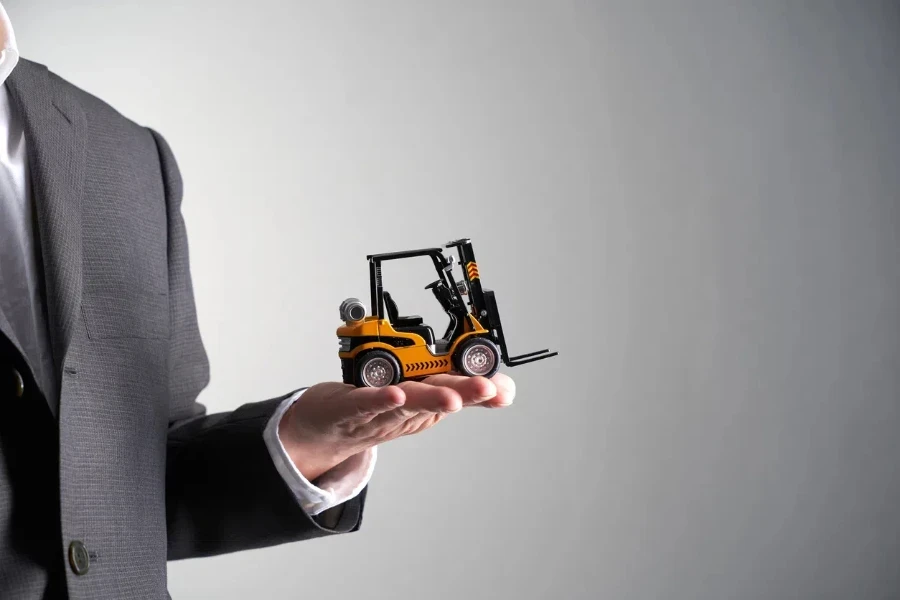
Selecting the right forklift involves a comprehensive evaluation of various factors, including brand reputation, model specifications, cost considerations, and emerging trends. By thoroughly assessing these elements, businesses can make informed decisions that align with their operational needs and long-term goals.




